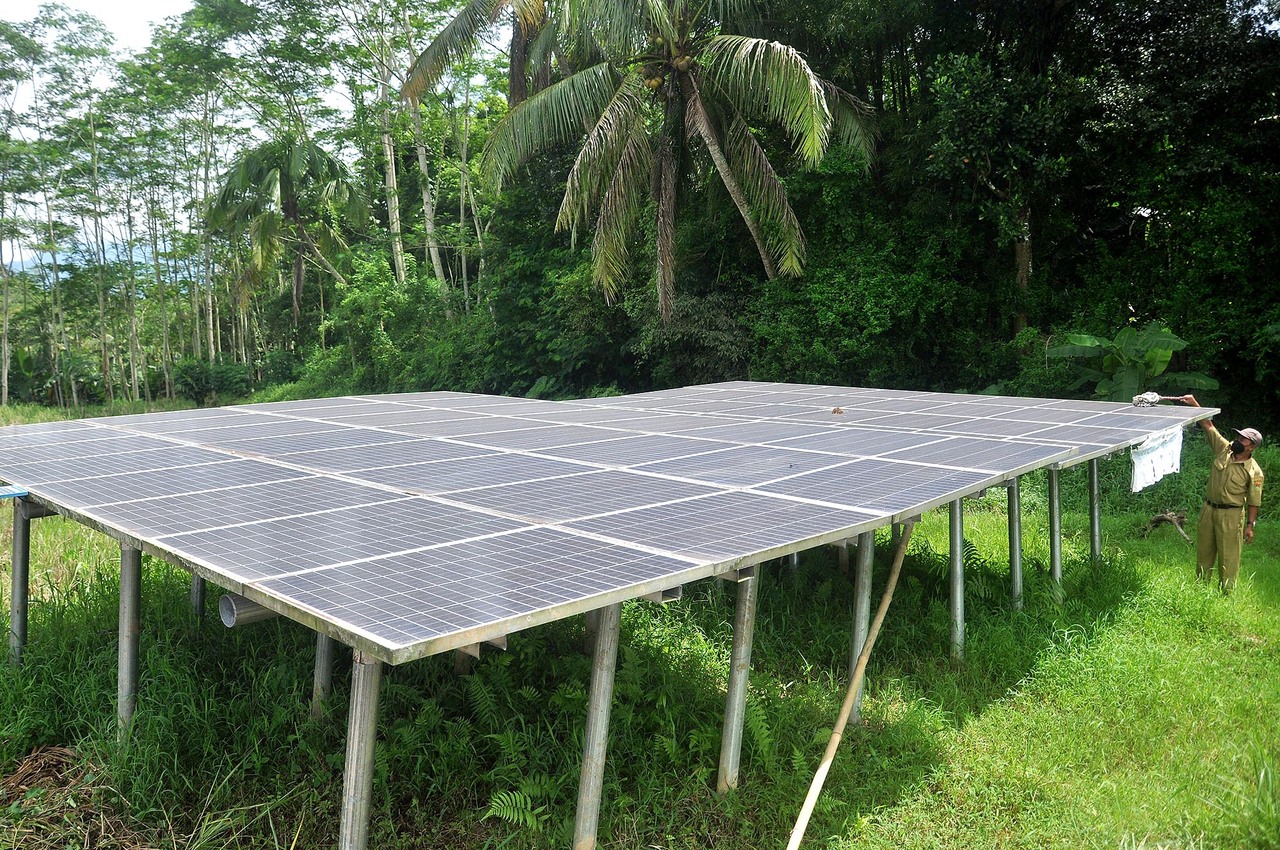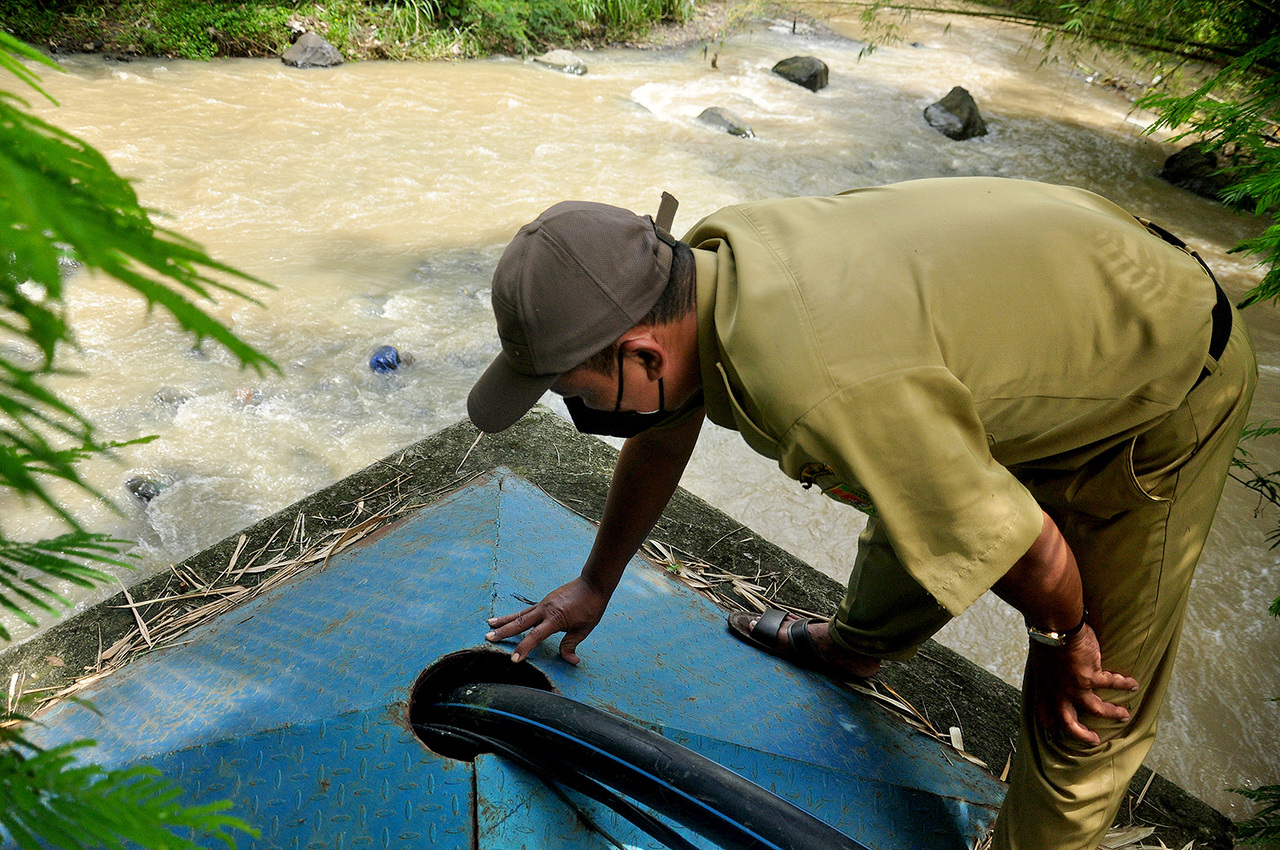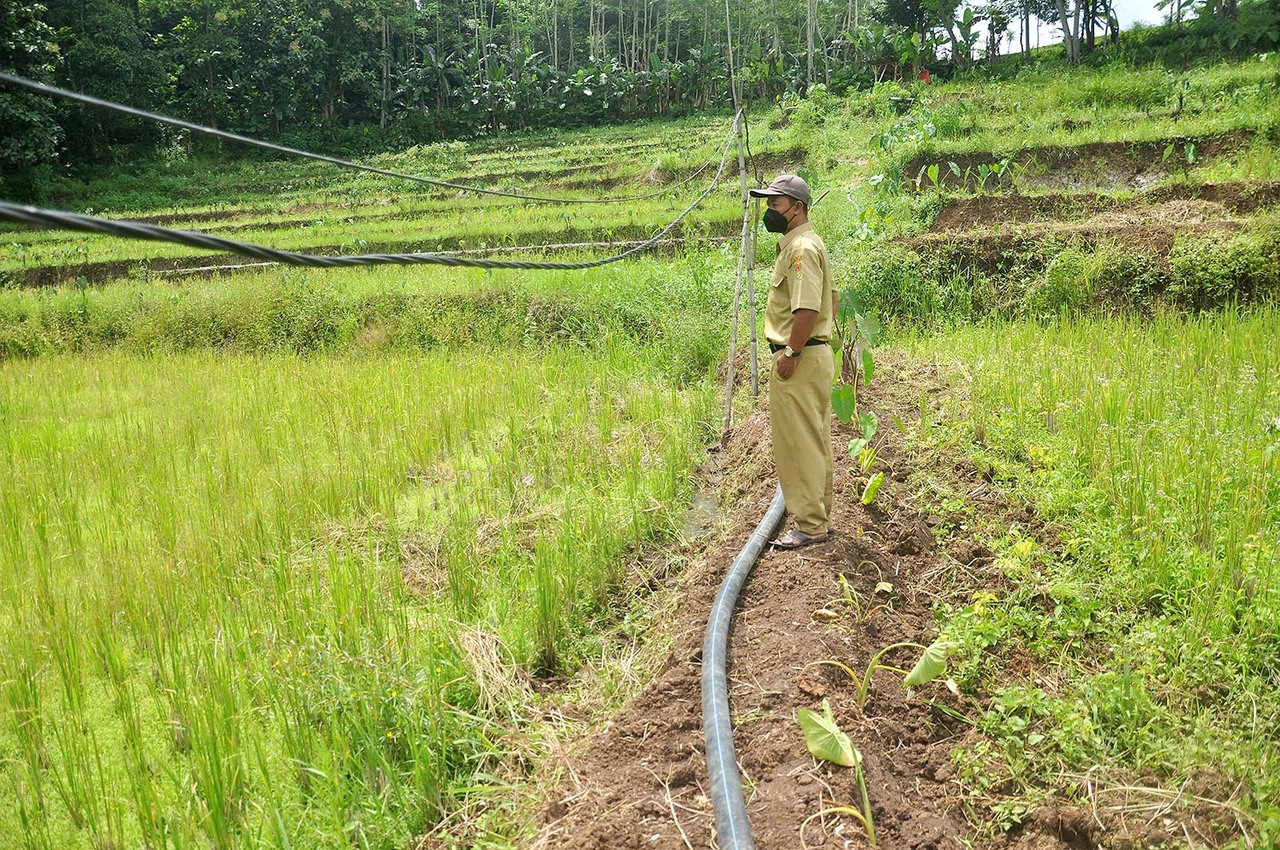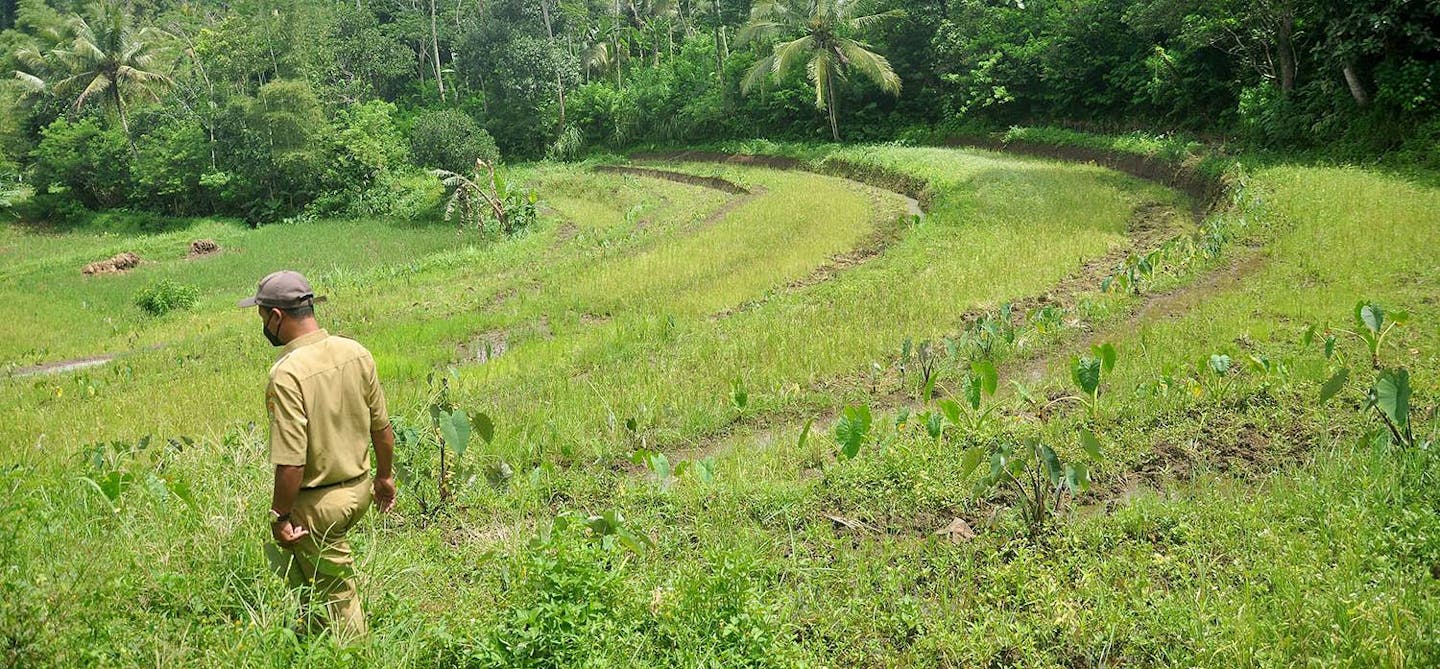Solar irrigation: how Indonesian farmers resist drought and save money
- Energy Transition
- Solar Photovoltaic
- Regenerative Agriculture
- Regenerative Croplands
- Sustainable Rice Farming
- Smallholder Farming
- Water Stewardship
- Indomalaya Realm
At first, Heri Purwanto, the village head of the remote Krincing Village on the island of Java, knew very little about renewable energy. As he read more about it, Purwanto became convinced it could solve his community's water problems.

One of the government employees of Krincing Village cleans the solar panels from dust. Image credit: Courtesy of Hartatik
Purwanto was determined to allocate more than half of the village funds to build a solar-powered water pump so that rice fields could be irrigated. For Indonesia's 272 million people, rice is the staple food. But as climate change increases droughts in the country, farmers need ways to access water.
Typically, farmers would pay for diesel-fueled pumps to access water during the dry season. Around 60% of operating expenses derive from oil consumption with this method. The rest comes from buying lubricants and paying for engine maintenance.
The new solar irrigation system eliminates purchasing fuel and maintaining diesel pumps. "And there is no more air or soil pollution," says Purwanto.
Farmers now draw water from the Elo River using an electric pump driven by solar panels. Then, they flow it through pipes to the rice fields.

The reservoir is for water from the Elo River drawn by an electric pump sourced from solar panels before being distributed to farmers' fields using a 400-meter long pipe. Image credit: Courtesy of Hartatik
Energy transition
According to Purwanto, the previous village head had also drawn water from the Elo River using a diesel pump, but it only lasted one month due to high costs. From that experience, he became interested in reading renewable energy articles on the internet.
"Then I asked if the panels were combined and then given a big pump, could it be possible or not? I also told the distributor if the water goes up, we pay. If it doesn't go up, we don't pay. Because we use village funds," said Purwanto.
After a discussion in a community meeting, Krincing Village finally decided to build a solar irrigation system. They bought 64 board off-grid solar panels, each with a capacity of 100 watts, which were imported from Germany. Each panel cost $142, and Purwanto purchased a water pump for $6,400.
The solar irrigation project started by building a water tank measuring 1.5 x 1.5 meters on the banks of the Elo River. The water pump is connected to this reservoir, which leads to a 400-meter pipe connected to the rice fields.
This power is sufficient to irrigate 70-80 hectares from town calculations. So far, solar panels have irrigated 15 hectares, with several areas yet to be reached.

One of the Krincing Village government employees checks the condition of the cable that connects the solar panel to the electric pump. Image credit: Courtesy of Hartatik
Green benefits
Fera (34), a farmer in Krincing Village, said he could plant twice the rice he produced after installing the solar irrigation system. Rice production on his farm increased from 1.7 tons to almost five tons, an area of 1,250 square meters.
The Agricultural Engineering Lecturer at Jenderal Soedirman University, Arief Sudarmaji, said the initial investment for small-scale solar power plants is usually high for rural villages. It ranges from $464 to $571, depending on the power required.
Sudarmaji says solar irrigation is more profitable than diesel pumps. Additionally, these systems emit less CO2, require minimal maintenance, only clean dust from the panels, and their service life can be 10 to 15 years.
Moreover, solar energy is available throughout the day and is the most stable compared to other renewable energies such as wind. Ultimately, it assists in mitigating the climate crisis, helping growers further combat the dry season.
Explore Climate Solutions
